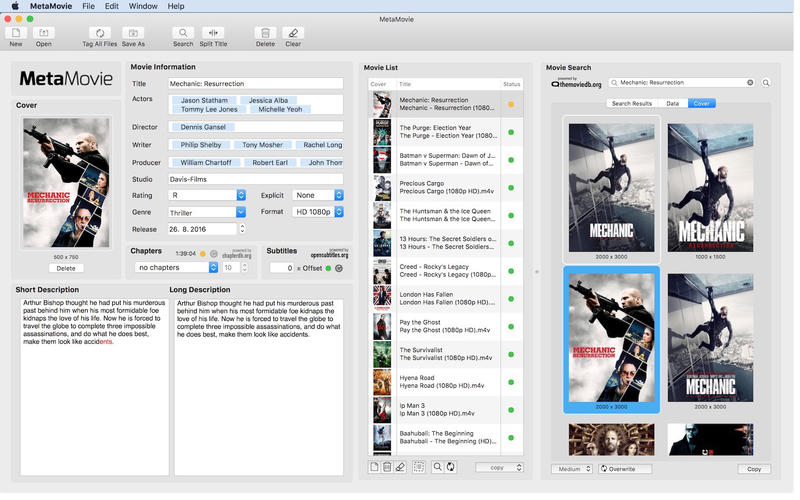
For that purpose, it has matured and grown to where it is a major force in the area. NanoHUB was originally created to bring together the computational electronics world as a place where programs and results could be efficiently shared. This program has always involved an aspect of computer simulations, both in a specific Computer Simulation class and as a part of several other classes such as the nanoelectronics and materials. In 2004, Dakota County Technical College started a 2 year, AAS degree Nanoscience Technician program. OOMMF: Object Oriented MicroMagnetic FrameworkĪ portable, extensible public domain program and associated tools for micromagnetic simulation
#METAMOVIE FILE FORMATS INSTALL#
NanoHUB’s cyber-infrastructure empowers simulation tool developers to make their codes universally accessible and useful via cloud computing and empowers users who can run hundreds of tools using a web-browser or tablet, free of charge, and without the need to download or install any. NanoHUB: Cloud Scientific Computing in Materials Education and Research

In this work, we have designed and implemented a massively parallel version of the Semicoarsening Black Box Multigrid Solver, which is capable of handling highly heterogeneous and anisotropic 3D reservoirs, on a parallel architecture with multiple GPU’s. In these simulations, the span of time scales from fast wave dynamics to the desired evolution of equilibrium due to transport processes is large.Ī Massively Parallel Semicoarsening Multigrid for 3D Reservoir Simulation on Multi-core and Multi-GPU Architectures The Magneto-HydroDynamic (MHD) model is used extensively to simulate macroscopic plasma dynamics in Magnetic Confinement Fusion (MCF) devices. Geometric Multigrid for MHD Simulations with Nedelec Finite Elements on Tetrahedral Grids The tools selected for this purpose include SCHRED, QuaMC2D, and OMEN nanowire/ NEMO5. In this presentation I will give overview of selected nanoHUB tools and their potential for performing state- of-the-art research. NanoHUB Used in Research: A One Developer/User View In particular, molecular dynamic simulations can allow for visualization of dislocations in a material, along with its resulting behavior when under stress. The goal of computational material science is to improve existing materials and design new ones through mathematical calculations. Nanomechanics Simulation Tool: Dislocations Make or Break Materials *** This OOMMF FTUG updated on to include information about the newly included text editor and accessing files using sftp *** OOMMF is the Object Oriented MicroMagnetic Framework, which is a powerful research-grade simulation tool for modeling the response of materials to applied. OOMMF FTUG: Object Oriented MicroMagnetic Framework First Time User's Guide This can be particularly useful for more advanced manipulations of the trajectory files, and for sharing files with others, such.
#METAMOVIE FILE FORMATS HOW TO#
This document describes how to generate and download simulation output files from the Nanomaterial Mechanics Explorer on nanoHUB and view them locally using OVITO. IWCE 2015 invited presentation. The placement of two dimensional (2D) materials such as hexagonal boron nitride (h-BN) and transition metal dichalcogenide (TMDC) at the forefront of materials and device research was pioneered by the discovery of graphene, an atomically thin 2D allotrope of.Įxploring Materials Properties with Nanomaterial Mechanics Explorer Structure Files

Fundamentals of Nanotransistors, 2nd Edition.Fundamentals of Nanoelectronics, Part B: Quantum Transport, 2nd Edition.Fundamentals of Nanoelectronics, Part A: Basic Concepts, 2nd Edition.Fundamentals of Atomic Force Microscopy, Part 2.Fundamentals of Atomic Force Microscopy, Part 1.From Atoms to Materials: Predictive Theory and Simulations.Biological Engineering: Cellular Design Principles.


 0 kommentar(er)
0 kommentar(er)
